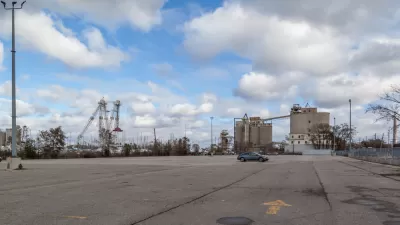In a reversal from Sidewalk Labs’ now-defunct tech-heavy proposal, Toronto’s new plan for the waterfront development known as Quayside emphasizes greenery and nature.

After the spectacular failure of Sidewalk Labs’ ambitious plan to redevelop Toronto’s waterfront into a tech utopia called Quayside, the city has a new plan that favors nature over technology, writes Karrie Jacobs in Technology Review.
The Sidewalk Labs ‘smart city’ proposal encountered opposition from the beginning. “The project’s tech-first approach antagonized many; its seeming lack of seriousness about the privacy concerns of Torontonians was likely the main cause of its demise.” As Jacobs writes, “By May 2020, Sidewalk had pulled the plug, citing ‘the unprecedented economic uncertainty brought on by the covid-19 pandemic.’ But that economic uncertainty came at the tail end of years of public controversy over its $900 million vision for a data-rich city within the city.”
Toronto hired a new design team to create a new vision for the site. “The new Waterfront Toronto project has clearly learned from the past. Renderings of the new plans for Quayside—call it Quayside 2.0—released earlier this year show trees and greenery sprouting from every possible balcony and outcropping, with nary an autonomous vehicle or drone in site.” In the new plan, Jacobs observes, “The pendulum has swung back toward Howard’s garden city: Quayside 2022 is a conspicuous disavowal not only of the 2017 proposal but of the smart city concept itself.”
The plan leaves open questions about the actual impact of its “green” infrastructure. Jacobs wonders, “How many pocket forests and neighborhood farms will it take to cool the planet?” But “Whatever its practical impact, renderings of the new version of Quayside suggest a more livable place” and a deeper understanding of what makes cities desirable places to live.
FULL STORY: Toronto wants to kill the smart city forever

Maui's Vacation Rental Debate Turns Ugly
Verbal attacks, misinformation campaigns and fistfights plague a high-stakes debate to convert thousands of vacation rentals into long-term housing.

Planetizen Federal Action Tracker
A weekly monitor of how Trump’s orders and actions are impacting planners and planning in America.

In Urban Planning, AI Prompting Could be the New Design Thinking
Creativity has long been key to great urban design. What if we see AI as our new creative partner?

King County Supportive Housing Program Offers Hope for Unhoused Residents
The county is taking a ‘Housing First’ approach that prioritizes getting people into housing, then offering wraparound supportive services.

Researchers Use AI to Get Clearer Picture of US Housing
Analysts are using artificial intelligence to supercharge their research by allowing them to comb through data faster. Though these AI tools can be error prone, they save time and housing researchers are optimistic about the future.

Making Shared Micromobility More Inclusive
Cities and shared mobility system operators can do more to include people with disabilities in planning and operations, per a new report.
Urban Design for Planners 1: Software Tools
This six-course series explores essential urban design concepts using open source software and equips planners with the tools they need to participate fully in the urban design process.
Planning for Universal Design
Learn the tools for implementing Universal Design in planning regulations.
planning NEXT
Appalachian Highlands Housing Partners
Mpact (founded as Rail~Volution)
City of Camden Redevelopment Agency
City of Astoria
City of Portland
City of Laramie



























